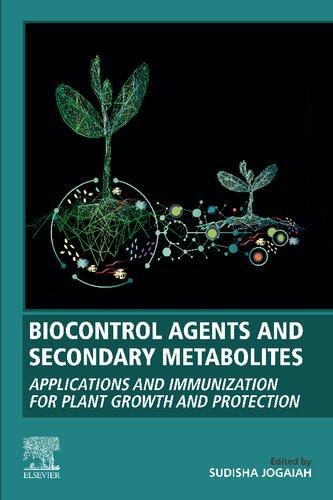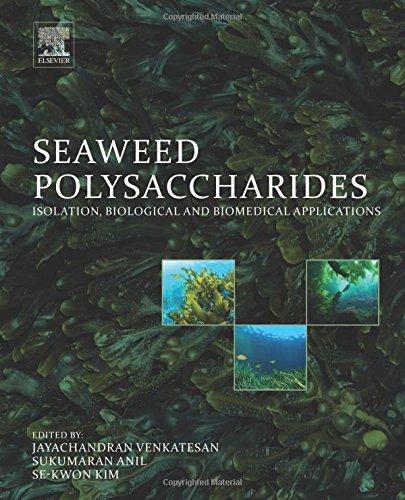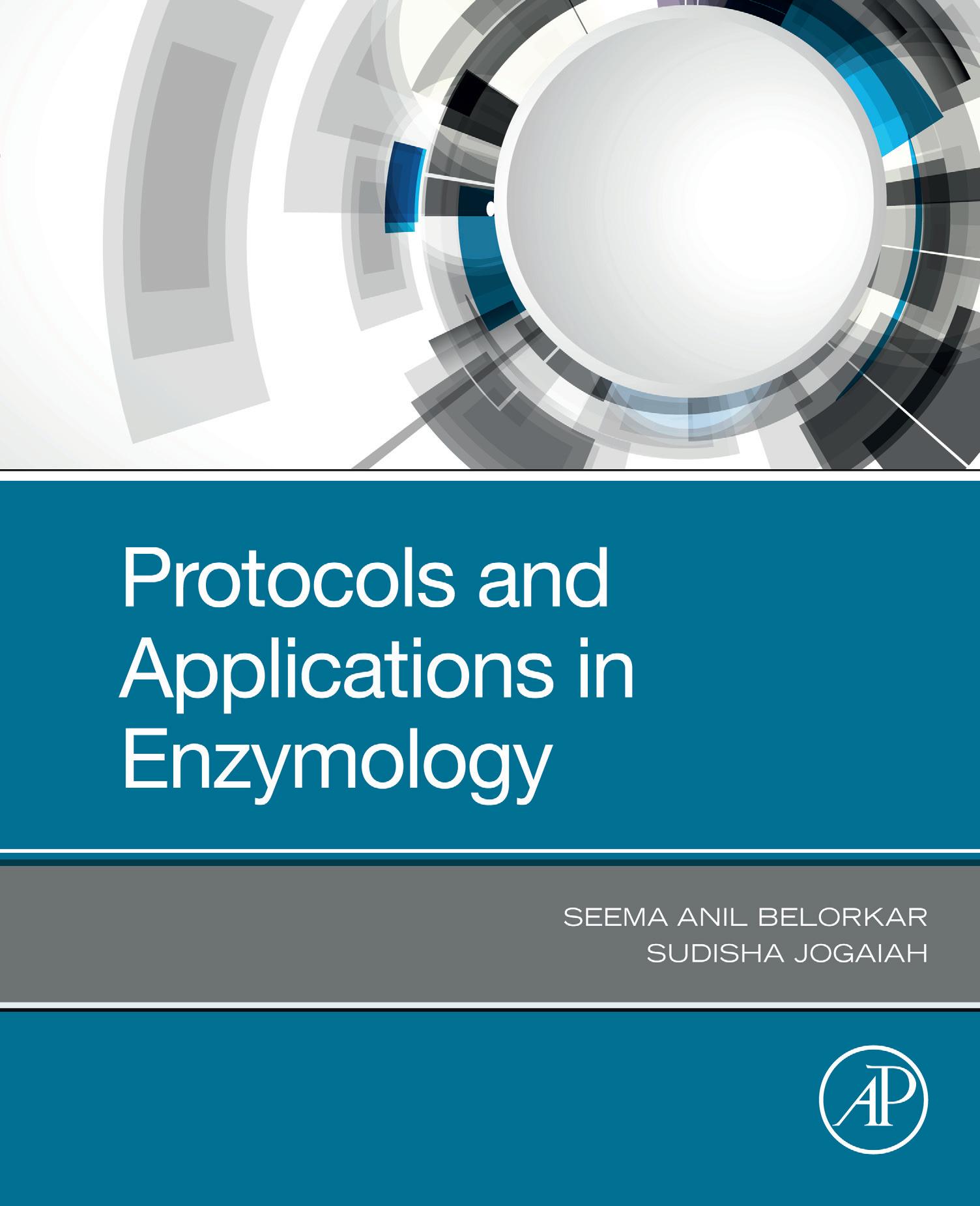https://ebookmass.com/product/protocols-and-applications-in-
Instant digital products (PDF, ePub, MOBI) ready for you
Download now and discover formats that fit your needs...
Biocontrol Agents and Secondary Metabolites - Applications and Immunization for Plant Growth and Protection Sudisha Jogaiah
https://ebookmass.com/product/biocontrol-agents-and-secondarymetabolites-applications-and-immunization-for-plant-growth-andprotection-sudisha-jogaiah/ ebookmass.com
Seaweed polysaccharides : isolation, biological and biomedical applications 1st Edition Anil
https://ebookmass.com/product/seaweed-polysaccharides-isolationbiological-and-biomedical-applications-1st-edition-anil/
ebookmass.com
Bio-Based Nanomaterials : Synthesis Protocols, Mechanisms and Applications Ajay Kumar Mishra
https://ebookmass.com/product/bio-based-nanomaterials-synthesisprotocols-mechanisms-and-applications-ajay-kumar-mishra-2/ ebookmass.com
Highland Gladiator Kathryn Le Veque [Veque
https://ebookmass.com/product/highland-gladiator-kathryn-le-vequeveque-3/
ebookmass.com
Research, Ethics and Risk in the Authoritarian Field 1st Edition Marlies Glasius
https://ebookmass.com/product/research-ethics-and-risk-in-theauthoritarian-field-1st-edition-marlies-glasius/
ebookmass.com
Psychology 13th Edition David G Myers
https://ebookmass.com/product/psychology-13th-edition-david-g-myers-2/
ebookmass.com
Applied Generative AI for Beginners: Practical Knowledge on Diffusion Models, ChatGPT, and Other LLMs 1st Edition Akshay Kulkarni
https://ebookmass.com/product/applied-generative-ai-for-beginnerspractical-knowledge-on-diffusion-models-chatgpt-and-other-llms-1stedition-akshay-kulkarni/ ebookmass.com
The Dead Letter Seeley Regester
https://ebookmass.com/product/the-dead-letter-seeley-regester/
ebookmass.com
Once Upon a Mail Order Bride Linda Broday
https://ebookmass.com/product/once-upon-a-mail-order-bride-lindabroday-4/
ebookmass.com
The Vanished Days Susanna Kearsley
https://ebookmass.com/product/the-vanished-days-susanna-kearsley-3/
ebookmass.com
代找亚马逊电子书zlib没有的qq2572480550
Protocolsand Applicationsin Enzymology
Thispageintentionallyleftblank
zlib没有的qq2572480550
Protocolsand Applicationsin Enzymology
SeemaAnilBelorkar
AssistantProfessor, MicrobiologyandBioinformaticsDepartment, AtalBihariVajpayeeUniversity, Bilaspur(C.G),India
SudishaJogaiah
AssistantProfessor, LaboratoryofPlantHealthcareandDiagnostics, PGDepartmentofStudiesinBiotechnologyandMicrobiology, KarnatakUniversity,PavateNagar,Dharwad,Karnataka,India
AcademicPressisanimprintofElsevier 125LondonWall,LondonEC2Y5AS,UnitedKingdom 525BStreet,Suite1650,SanDiego,CA92101,UnitedStates 50HampshireStreet,5thFloor,Cambridge,MA02139,UnitedStates TheBoulevard,LangfordLane,Kidlington,OxfordOX51GB,UnitedKingdom
Copyright © 2022ElsevierInc.Allrightsreserved.
Nopartofthispublicationmaybereproducedortransmittedinanyformorbyany means,electronicormechanical,includingphotocopying,recording,oranyinformation storageandretrievalsystem,withoutpermissioninwritingfromthepublisher.Detailson howtoseekpermission,furtherinformationaboutthePublisher’spermissionspolicies andourarrangementswithorganizationssuchastheCopyrightClearanceCenterandthe CopyrightLicensingAgency,canbefoundatourwebsite: www.elsevier.com/permissions .
Thisbookandtheindividualcontributionscontainedinitareprotectedundercopyright bythePublisher(otherthanasmaybenotedherein).
Notices
Knowledgeandbestpracticeinthis fieldareconstantlychanging.Asnewresearchand experiencebroadenourunderstanding,changesinresearchmethods,professional practices,ormedicaltreatmentmaybecomenecessary.
Practitionersandresearchersmustalwaysrelyontheirownexperienceandknowledgein evaluatingandusinganyinformation,methods,compounds,orexperimentsdescribed herein.Inusingsuchinformationormethodstheyshouldbemindfuloftheirownsafety andthesafetyofothers,includingpartiesforwhomtheyhaveaprofessionalresponsibility.
Tothefullestextentofthelaw,neitherthePublishernortheauthors,contributors,or editors,assumeanyliabilityforanyinjuryand/ordamagetopersonsorpropertyasa matterofproductsliability,negligenceorotherwise,orfromanyuseoroperationofany methods,products,instructions,orideascontainedinthematerialherein.
LibraryofCongressCataloging-in-PublicationData
AcatalogrecordforthisbookisavailablefromtheLibraryofCongress
BritishLibraryCataloguing-in-PublicationData
AcataloguerecordforthisbookisavailablefromtheBritishLibrary
ISBN:978-0-323-91268-6
ForinformationonallAcademicPresspublicationsvisitourwebsiteat https://www.elsevier.com/books-and-journals
Publisher: AndreGerhardWolff
AcquisitionsEditor: MichelleFisher
EditorialProjectManager: SamW.Young
ProductionProjectManager: NiranjanBhaskaran
CoverDesigner: AlanStudholme
TypesetbyTNQTechnologies
Preface ............................................................................................... xvii
CHAPTER1Enzymes past,present,andfuture .........................1
1.1 Generalintroduction. ..........................................................1
1.2 Characteristicsofenzymes... ................................................1
1.2.1Enzymeasamolecule................................................4
1.2.2Catalyticalproperty... ................................................5
1.2.3Specificity ................................................................5
1.2.4Holoenzyme... ..........................................................6
1.2.5Turnovernumber.. .....................................................7
1.2.6Reversibility... ..........................................................7
1.2.7Weightofenzyme .....................................................7
1.2.8Sensitivity ................................................................7
1.2.9Activesite. ...............................................................8
1.3 Theconceptofcell-freefermentation ....................................8
1.4 Nomenclatureofenzymes ....................................................8
1.5 Enzymes thepresentscenario.. ...........................................9
1.5.1Substratebinding. ....................................................10
1.5.2Mechanismofenzymecatalyzedreaction .....................10
1.5.3Catalysis.. ...............................................................12
1.6 Recentdevelopments ........................................................12
1.6.1Immobilization ........................................................12
1.6.2Biosensors...............................................................12
1.6.3Diagnostictools... ....................................................13
1.6.4Metagenomics .........................................................13
1.7 Thefuture .......................................................................13 References. ............................................................................14
CHAPTER2Distributionanddiversityinmicrobial enzymes ................................................................17
2.1 Originofenzymediversity... ..............................................17
2.2 Naturalnicheasadiversitysource... ...................................17
2.3 Evolutionandfunctionofenzymes... ...................................20
2.4 Acidophilicenzymes. ........................................................20
2.4.1Adaptationatcellularlevel... .....................................29
2.5 Alkaliphiles... ..................................................................34
2.6 Halophilicorganisms ........................................................36 v 代找亚马逊电子书
CHAPTER3Screeningofpotentialmicrobesforenzymes ofindustrialsignificance
3.1 History..
3.2 Highthroughputscreeningmethods needofpresentday
3.2.1Enrichmentculture..
3.2.2Uncultivablesasenzymesource a metagenomicapproach..
3.2.3Directedenzymeevolution..
3.2.4Computationalbiology(insilicostudies)....
3.3 Throughputmethodsforscreeningofenzymevariants
3.3.1Selectionscreening
3.3.2Agarplatemethod.
3.3.3Microtiterplatescreeningmethod.
3.3.4Fluorescentactivatedcellsorting..
3.3.5Invitrocompartmentalization.
3.3.6Droplets ................................................................58
3.3.7Plasmiddisplay
3.3.8Phagedisplay...
3.3.9Ribosomedisplaym-RNA.
3.3.10m-RNAdisplay
3.3.11Thec-DNAdisplay .................................................62
3.3.12Reporter-basedscreening.. .......................................63
3.3.13Fluorescence-activateddropletsorting. .......................64
3.3.14Digitalimaging
3.4 Conclusionandfutureperspective..
4.1 Historyoffermentationforsocialbenefits.
4.2 LouisPasteurandfermentation ...........................................72
4.3 Fermentation ...................................................................73
4.3.1SMFfermentation... .................................................74
4.3.2Solid-statefermentation. ............................................79
4.4 Conclusionandfuturedirections
Subchapter5.4Assayofenzyme
Safetyconsiderationsandstandards.. .......................................161 Alternativemethods/procedures... ............................................161 References. ..........................................................................161
CHAPTER8Strategiestoimproveenzymeactivityfor industrialprocesses.............................................163
8.1 Introduction... ................................................................163
8.1.1Improvementofenzyme-basedprocess.. ....................163
8.1.2Strategiestoachieveefficientbiocatalysis ..................166
8.1.3Heterogeneousbiocatalysis... ...................................170
8.1.4Substrateengineering. .............................................171
8.1.5Advancedstrategiesforenzymeimprovement .............171
8.1.6Alteringthesignalpeptide .......................................172
8.1.7Metagenomics .......................................................172
8.1.8Geneticengineering... .............................................173
8.2 Conclusion ....................................................................174 References. ..........................................................................174
CHAPTER9Scopeandrelevanceofindustrialapplications .....179
9.1 Introduction... ................................................................179
9.2 Enzymesinindustries .....................................................180
9.3 Commonstrategiesforenzymeimmobilization. ..................181
9.3.1Useofcarriers .......................................................181
9.3.2Covalentlinkages. ..................................................181
9.3.3Entrapment............................................................182
9.4 Someimportantindustrialenzymes.. .................................182
9.4.1Fructosyltransferase... .............................................182
9.4.2Lipases .................................................................184
9.4.3Proteases.. .............................................................187
9.5 Biocatalyticmembranes.. .................................................189
9.6 Conclusion ....................................................................190 References. ..........................................................................190
CHAPTER10Agroindustrialwastesforenzymeproduction ......197
10.1 Introduction. ................................................................197
10.2 Agroindustrialwastes:excellentrawmaterialfor production... ................................................................197
10.3 Impactofagroindustrialwastesonenvironment: aglobalconcern ...........................................................198
10.4 Wastetovalue.. ...........................................................200
CHAPTER12Biotechnologicalapplicationsofenzymesand futureprospective ..............................................225
12.1 Introduction. ................................................................225
12.2 Enzymesinmedicalfield... ............................................225
12.2.1Enzymesanddiagnosis... .....................................225
12.2.2Desirablefeaturesofdiagnosticenzyme. ................227
12.2.3Indiseasediagnosis.. ..........................................227
12.2.4Coupledenzymeassay.........................................229
12.2.5Immunologicalreactions. .....................................229
12.2.6DNA-baseddiagnostic .........................................229
12.2.7Therapeuticenzymes. ..........................................230
12.3 Thebiologicaldetergents:arevolutioninlaundry industry. .....................................................................232
12.3.1Proteases. ..........................................................234
12.3.2Lipase...............................................................235
12.3.3Amylases ..........................................................235
12.3.4Cellulases ..........................................................235
12.4 Conclusion.. ................................................................236 References. ..........................................................................237
Thispageintentionallyleftblank
没有的qq2572480550
Preface
Protocolsandapplicationsinenzymology isabookpresentingintensive,coordinated,andsynchronizedinformationwiththeperfectblendofhistoricalinformation,thrustareasinresearch,andtheresultantprotocolsmuchdesiredinthe academicsandresearchlabs.
Thisbookisaone-stopsolutionforstudents,academicians,researchbeginners, andentrepreneurs.Theinitialtwochaptersrevealtheglorioushistoryofenzymologywiththepioneeringresearchanditsdeep-rootedconnectionwiththediscoveriesbyeminentchemists.Itexplainsthediversityanenzymemoleculeexhibitsand theirimplicationsonindustrialprocesses.
Thebookdescribesvariousstagesofscreeningtechnologies,conventionalVs modern,fermentations,andtheirtypesandprovidesexclusiveresearch-basedprotocolsforindustriallyimportantenzymeswhicharedesperatelyrequiredinresearch labsandindustrialresearchunits.Thus,thisbookisalinktoprotocolsdesiredbythe industriesastheintensiveoutcomeoftheresearchcommunity.Italsoelucidatesthe “Wastetovalue”termbydiscussingconversionofthetrappedenergyinwastesinto bioactivemolecules.
Thebookwillhopefullyupdatethereadersfromagriculturaltoindustrialsector withrecentadvancesinusageofenzymesasfrontiertoolsandfinallyfocusingon applicationsofenzymesindifferentwalksoflifeandfutureapplications.
(Dr.SeemaAnilBelorkarandDr.SudishaJogaiah)
Authors
Thispageintentionallyleftblank
zlib没有的qq2572480550
Enzymes—past,present, andfuture 1
1.1 Generalintroduction
Enzymestodayneednointroduction.Theyarewellrecognizedandacknowledged ineverywalkoflifefromalaymantoaresearchpersonentangledinmolecular biologyprotocols.Thesemagicalmoleculeshaveprovedtobeanefficienttoolin almostallindustriesdirectlyorindirectly.
Theterm“Enzyme”wasproposedbyWilhelmKuhne,whichinGreekmeans “leavened”or“inyeast”in1877.EnzymeshavegainedrecognitionasaBiological catalyst,whichisgenerallyproteinswiththeexceptionsofribozymes.Thenature andactivityofanyenzymedependuponthesequenceofaminoacidsofthepolymer. Theenzymescanbeactiveasasinglechain(monomericprotein)orcanhaveanumberofpolymericchainsinformofafunctionalcomplex(oligomericprotein).The functionofanenzymeisdependentonitsstructureandconformationthatinturn dependsontheaminoacidsequence(Bergetal.,2002).Thestructureofanyenzyme isaverysensitiveandadaptivefeatureincontexttoitschangingenvironment.It cannotbethesolefeaturegoverningitsfunction(Somero,1978).
Thebasicdevelopmentofenzymologyisaccreditedtopioneeringobservations inthefieldthatareenlistedin Table1.1.
1.2 Characteristicsofenzymes
Enzymesarebiologicalcatalysts.Theycatalyzebiologicalreactionsinasimilar mannerasChemicalcatalystsdo.Theenzymestransformtheirsubstrates(reactants) toproductsundernormalconditionsoftemperatureandpressureincontrastto chemicalcatalyst. Fig.1.1 elucidatesthegeneralpathofenzymeaction.Itisa two-stepreaction.ThefirststepisreversibleandformsanunstableEScomplex. Ifthesubstrateisspecific,thereactionprogressesforthesecondstep;otherwise, thebreakdowncausesthereleaseofthesubstrateandabackwardreactiontakes place.Thesecondstepisirreversibleandprogressesonlyintheforwarddirection whentheenzymefindsitsspecificsubstrates. CHAPTER 1
ProtocolsandApplicationsinEnzymology. https://doi.org/10.1016/B978-0-323-91268-6.00007-7 Copyright © 2022ElsevierInc.Allrightsreserved.
Table1.1 Pioneeringcontributionsinenzymology.
YearNoblelaureatesContributions
2018FrancesH.ArnoldThedirectedevolutionofenzymes
GeorgeP.Smith SirGregoryP.Winter
2017JacquesDubochet JoachimFrank RichardHenderson
2016Jean-PierreSauvage
SirJ.FraserStoddart BernardL.Feringa
2015TomasLindahl PaulModrich AzizSancar
2012RobertJ.Lefkowitz BrianK.Kobilka
2009Venkatraman Ramakrishnan
ThomasA.Steitz AdaE.Yonath
2008OsamuShimomura
MartinChalfie RogerY.Tsien
2002JohnB.Fenn
KoichiTanaka
KurtWuthrich
1997PaulD.Boyer
JohnE.Walker
JensC.Skou
1993KaryB.Mullis
MichaelSmith
Thephagedisplayofpeptidesandantibodies
Developingcryo-electronmicroscopyforthehighresolutionstructuredeterminationofbiomolecules insolution
Thedesignandsynthesisofmolecular machines
MechanisticstudiesofDNArepair
StudiesofG-protein-coupledreceptors
Studiesofthestructureandfunctionofthe ribosome
Thediscoveryanddevelopmentofthegreen fluorescentprotein,GFP
2006RogerD.KornbergThemolecularbasisofeukaryotictranscription
Developmentofsoftdesorptionionizationmethods formassspectrometricanalysesofbiological macromolecules
Developmentofnuclearmagneticresonance spectroscopyfordeterminingthethree-dimensional structureofbiologicalmacromoleculesinsolution
Elucidationoftheenzymaticmechanism underlyingthesynthesisofadenosinetriphosphate (ATP)
Forthefirstdiscoveryofanion-transporting enzyme,Naþ,Kþ-ATPase
Inventionofthepolymerasechainreaction(PCR) method
Oligonucleotide-based,site-directedmutagenesis anditsdevelopmentforproteinstudies
1990EliasJamesCoreyThetheoryandmethodologyoforganicsynthesis
1989SidneyAltman
ThomasR.Cech
1975JohnWarcupCornforth VladimirPrelog
DiscoveryofcatalyticpropertiesofRNA
Thestereochemistryofenzyme-catalyzedreactions
Thestereochemistryoforganicmoleculesand reactions
1974PaulJ.FloryThephysicalchemistryofthemacromolecules 2 CHAPTER1 Enzymes—past,present,andfuture
Table1.1 Pioneeringcontributionsinenzymology. cont’d
YearNoblelaureatesContributions
1972ChristianB.Anfinsen
StanfordMoore
WilliamH.Stein
Ribonuclease,especiallyconcerningthe connectionbetweentheaminoacidsequenceand thebiologicallyactive conformation
Theconnectionbetweenchemicalstructureand catalyticactivityoftheactivecenterofthe ribonucleasemolecule
1970LuisF.LeloirDiscoveryofsugarnucleotidesandtheirroleinthe biosynthesisofcarbohydrates
1969DerekH.R.Barton OddHassel
Thedevelopmentoftheconceptofconformation anditsapplicationinchemistry
1965RobertBurnsWoodwardAchievementsintheartoforganicsynthesis
1964DorothyCrowfoot Hodgkin
1963KarlZiegler GiulioNatta
1962MaxFerdinandPerutz JohnCowderyKendrew
X-raytechniquesofthestructuresofimportant biochemicalsubstances
Thechemistryandtechnologyofhigh polymers
Thestructuresofglobularproteins
1961MelvinCalvinThecarbondioxideassimilationinplants
1958FrederickSangerStructureofproteins,especiallythatofinsulin
1957Lord(AlexanderR.)ToddNucleotidesandnucleotidecoenzymes
1956SirCyrilNorman Hinshelwood NikolayNikolaevich Semenov
Mechanismofchemicalreactions
1955VincentduVigneaudThefirstsynthesisofapolypeptidehormone
1953HermannStaudingerMacromolecularchemistry
1950OttoPaulHermannDiels KurtAlder
1946JamesBatchellerSumner JohnHowardNorthrop WendellMeredithStanley
1929ArthurHarden
HansKarlAugustSimon vonEuler-Chelpin
Discoveryanddevelopmentofthediene synthesis
Enzymescanbecrystallized Preparationofenzymesandvirusproteinsinapure form
Thefermentationofsugarandfermentative enzymes
1926The(Theodor)SvedbergDispersesystems
1909WilhelmOstwaldCatalysisandforhisinvestigationsintothe fundamentalprinciplesgoverningchemical equilibriaandratesofreaction
1907EduardBuchnerBiochemicalresearchesandhisdiscoveryofcellfreefermentation
1902HermannEmilFischerRecognitionoftheextraordinaryserviceshehas renderedbyhisworkonsugarandpurinesyntheses
FIGURE1.1
Generalmechanismofenzyme-catalyzedreaction.
1.2.1 Enzymeasamolecule
Enzymesaremacromoleculeshavingahighmolecularweight(MW)andaredisproportionatelybiggerwhencomparedtotheirsubstrate.Generally,theMWofenzymescoversabroadrange.Thegeneralpropertiesinrelationtoitsfunctionsare explainedin Fig.1.2.
DixonandWeb(1958) tabulatedenzymesinthreeseriesorclasses(2n 12,000, 2n 16,000,and2n 19,000),where n isintegral0 4.Ahypothesiswasproposed by Wright(1962) usingexperimentaldatabutasthegroupsofenzymeswere formed,thereremainedaquestionofBiasedness. Johnstonetal.(1945) proposed abetterapproachofthecorrelationfunctionforvalidationoftheSvedberghypothesis(SvedbergandPedersen,1940).TheMWofproteinsiscalculatedbySvedberg’s equationdependingontheforceappliedandthemassofthesedimentingmolecule.
FIGURE1.2
Propertiesandfunctionsofenzymes.
Thesedimentationvelocitywasfundamentallyusedforthedeterminationofmolecularweightsofproteins.Presently,anapproachusingGelfiltrationChromatography andSDS-PAGEaretheadvancedmethodsfortheMWdetermination.
Asweallknowthatmostenzymesareproteins,theirgeneralbehavioris colloidalasanattributeoftheirhighmolecularweight.Enzymesthatareproteinaceousarethermolabileinnature.Generally,enzymesareactiveatroomtemperature, atlowtemperaturestheyarereversiblyinhibited,andathighertemperaturestheyare irreversiblyinactivated.
Although,thistemperaturesensitivitycanbehandled,ifenzymesarestoredin theformofdriedextracts.Thestabilityoftheenzymesincreasesalongwith increasedshelflife.EveryenzymerequiresamicablepHandtemperatureconditions toexplicititshighestactivityreferredasoptimumpHandtemperature.Inzones beforeandaftertheoptimumzone,theenzymeactivitydecreases. Fig.1.3 explains themaximumenzymeactivityinresponsetooptimumpHandtemperature conditions.
1.2.2 Catalyticalproperty
Amoststrikingfeatureoftheenzymeisitscatalyticpowerthatmakesitarobust synthetictool.Incomparisontochemicalcatalysts,enzymesarewonderfulbecause theycatalyzethetransformationofsubstratesatnormaltemperatureandpressure availableinsidethebiologicalsystem.Enzymecatershighpotentialofsubstrate conversionascomparedtoreactionsthatrunbythemselves.Itremainsunalteredafterthereactioniscomplete,providingthealternativeofitsrecyclingforbetteryield.
1.2.3
Specificity
Theuniquenessoftheenzymeisitsstructuralconformationthatrendersthequality ofbeinganeffectivecatalyst.Thecatalysisconferredbytheenzymeisveryfocused
FIGURE1.3 SensitivityoftheenzymestowardpHandtemperature.
Table1.2 Differenttypesofspecificitiesexhibitedbyenzymes.
Typesofenzymespecificities
Bondspecificity (relativespecificity)
Groupspecificity (structural specificity)
Substrate specificity (absolute specificity)
Opticalspecificity (stereo-specificity)
(Cofactor specificity)
(Geometric specificity)
EnzymeActionon
Peptidase Lipase Peptidebond Esterbond
EnzymeActionon
PepsinPeptidebondlinkedtoaromaticamino acidslikephenylalanine,tyrosine,and tryptophan
EnzymeActionon
Sucrase Arginase Carbonicanhydraseo Sucrose Arginine carbonicacid.
EnzymeActionon L-aminoacidoxidase a-amylase L-aminoacids a-1-4glycosidiclinkageofstarchand glycogen
EnzymeCofactor
Glucose-6-phosphate dehydrogenase NADH
EnzymeSubstrates Alcoholdehydrogenase canoxidize Chymotrypsin
Methanoland n-propanoltoaldehydes.
Peptidebondandesterbond
andconfinedtoeitheroneoragroupofstructurallyrelatedmolecules.Thespecificitycanbeclassifiedintoabsolutespecificityandrelativespecificity.Nowadays, enzymesarefindingimmenseapplicationsongroundsofRegioselectiveandStereoselective(Muetal.,2020). Table1.2 explainsthespecificitiesofthedifferent enzymesalongwithexamplesfallingineachcategory.
1.2.4 Holoenzyme
Manyenzymeshaveanonproteinpartalongwiththem.Suchconjugatedenzymes foundassociatedwithanotherkindofmoleculesarecalledtheholoenzyme.The proteincomponentiscalledastheapoenzyme,andthenonproteincomponentis calledthecofactor.Ifthecofactorisinorganicinnature,itisreferredasprosthetic groupandifitisorganicinnature,itiscalledascoenzyme.Theprostheticgroups areintenselyassociatedwiththeapoenzymeandarenoteasilyavailable.Contrarily, thecoenzymesareverylooselyboundresultingineasyseparationfromtheprotein component.
Thecofactorisahelpermicromoleculethatconfersenzyme,itsfunctionality. Thenonproteinnaturemakesitthermostable.Themainroleofcofactorisit
1.2 Characteristicsofenzymes
becomesasignificantpartinthereactioncenteroftheenzymeforcatalysis involvingtheremovaloffunctionalgroups.Cofactorshavetheabilitytogetassociatedwithotherenzymesandhelptheirfunctionalityafterassociation.
1.2.5 Turnovernumber
Asweallknow,enzymesarebiologicalcatalyststhatremainunalteredafterthereactioniscomplete.Therateofenzymecatalystreactionsdependsuponthenumber ofsubstratemoleculesconvertedintotheproductinagivenspecifiedtime.Turnover numberisthereforedefinedastheamountofsubstrateconvertedintotheproductin 1s,inthegivenspecifiedcondition(wheretheconcentrationofsubstrateisinsaturation).Enzymesexhibitawidevarietyofturnovernumbersrangingfrom0.5to105.
1.2.6 Reversibility
Whenwefocusoncatalyzedreactions,theenzymecatalyzedreactionsdifferfrom thechemicalcatalystinawaythatitfunctionsaccordingtotheneedofthebiologicalsystem.Thenatureoftheenzymevariesinaccordancewiththeroleitis executinginthemetabolism.Therefore,enzyme-catalyzedreactionsincludeunidirectional,bidirectionaltypes,andeveneegulatoryreactions.
1.2.7 Weightofenzyme
Mostoftheenzymesrangebetween20kDand60,000kDmolecularweight.The3Dstructureisvisualizedintermsofamacromoleculewith327nminsizeandeventuallyappearstobeverylargeincontexttothecellularenvironment.Thereviewof theenzymerevealedthelargesizeoftheenzymeoffersalargesurfaceareaofthe moleculetocircumventthebindingsitesofsubstrateswithappropriateorientation.
Therearereportsoftwoesterasesverysmallmolecularweightenzymesfrom Candidalipolytica and Bacillusstearothermophilus with5.7kDa(56aminoacid residue)andthe Bacillus enzymeis1.57kDa(17aminoacids)(Matteyetal., 1998).ThehighestMWenzymesreportedarefrom Y.lipolytica withamolecular weightof120kDa,the90kDaleucineaminopeptidaseIIfrom Aspergillusoryzae (Nicaudetal.,2002),andglucoamylasefrom Arxulaadeninivorans (Swennen etal.,2002).
1.2.8 Sensitivity
Yetanotherfeatureofenzymesisthattheyareverysensitivetotheenvironmentin whichtheyarepresent.Theenvironmentalconditionsimposetremendousinfluence onthethree-dimensionalstructureoftheenzymemoleculeandhenceaffectitsactivityandcatalyticpowertotheextentwhetheritwillremaininactivestateorbe inactive.
ThepH,temperature,andconcentrationofionsarefewfactorsthatimpedethe biologicalfunctioningofthemolecule.Theseconsequencesareduetothe
















